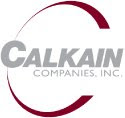
Net Lease Insider interviewed Richard Ader, Chairman and Founder of U.S. Realty Advisors, LLC, one of the largest owners and acquirers of single tenant net lease real estate transactions. We asked him five questions dealing with the present and future of commercial real estate, his answers proved both insightful and thought provoking.
(1) Will the commercial real estate market bottom out in 2010?
I do believe the first six months of 2010 will continue to show a decline in value and rents in most sectors of the real estate market. I believe the commercial real estate market will start to bottom out in late 2010 or possibly into the first quarter 2011. A key determinant will be how the growing shadow of maturing mortgage loans is handled.
(2) Is commercial real estate’s fate tied to unemployment or any other pertinent economic factors?
Commercial real estate is tied to all economic factors due to the fact that real estate iscapital intense, and supply and demand driven. Job creation and unemployment directly impact all aspects of commercial real estate: vacancies impact rents for office buildings, and we assume that retail demand will continue at lower levels which will affect both retail and distribution properties. In addition, until the real estate capital markets are re-started, new real estate development is likely to remain at the current depressed level. In the background is the potential for increased inflation, which would impact the cost of operating properties and financing properties, but may not affect rents which are more demand driven.
(3) When recovery does begin, what areas will grow first and fastest?
I think the first areas to recover in the real estate market will be retail and distribution, with office being last. I believe when the recovery comes, people first will start shopping again. This pent-up retail demand will trigger distribution to meet greater retail demand (and permanent changes in retail patterns). Office space will trail the recovery, as companies will first re-occupy large volumes of currently unused space before starting to lease new space.
(4) Are there segments of commercial real estate that you find appealing even in this economy, including the net lease market?
We find net leases to be appealing. Like most real estate assets, cap rates today have increased substantially compared to the over-heated markets of two years ago, and lease terms are longer. There also are opportunities to buy mortgage debt at good discounts with the objective of owning the real estate or achieving equity-type returns.
(5) Would you prefer to invest: Close to home or in a stronger metro market? If yes, what are your top two choices?
I think the preference today for investments in multi-tenanted office assets should be in the stronger metro markets. Distribution should also be in the stronger distribution areas, and retail should be based on prior performance. Net leases should be driven by corporate credit. How the lessee uses the asset in its business and what alternate demand for the asset would exist if the lessee were to move out.
 As reported by MSN Money, eight restaurants have done relatively well compared to their competitors and still have the ability to expand regardless of our current economy climate. Specifically, “all of these companies are financially healthy, with reasonable debt and the wherewithal to keep expanding despite a credit crunch”.
As reported by MSN Money, eight restaurants have done relatively well compared to their competitors and still have the ability to expand regardless of our current economy climate. Specifically, “all of these companies are financially healthy, with reasonable debt and the wherewithal to keep expanding despite a credit crunch”.








